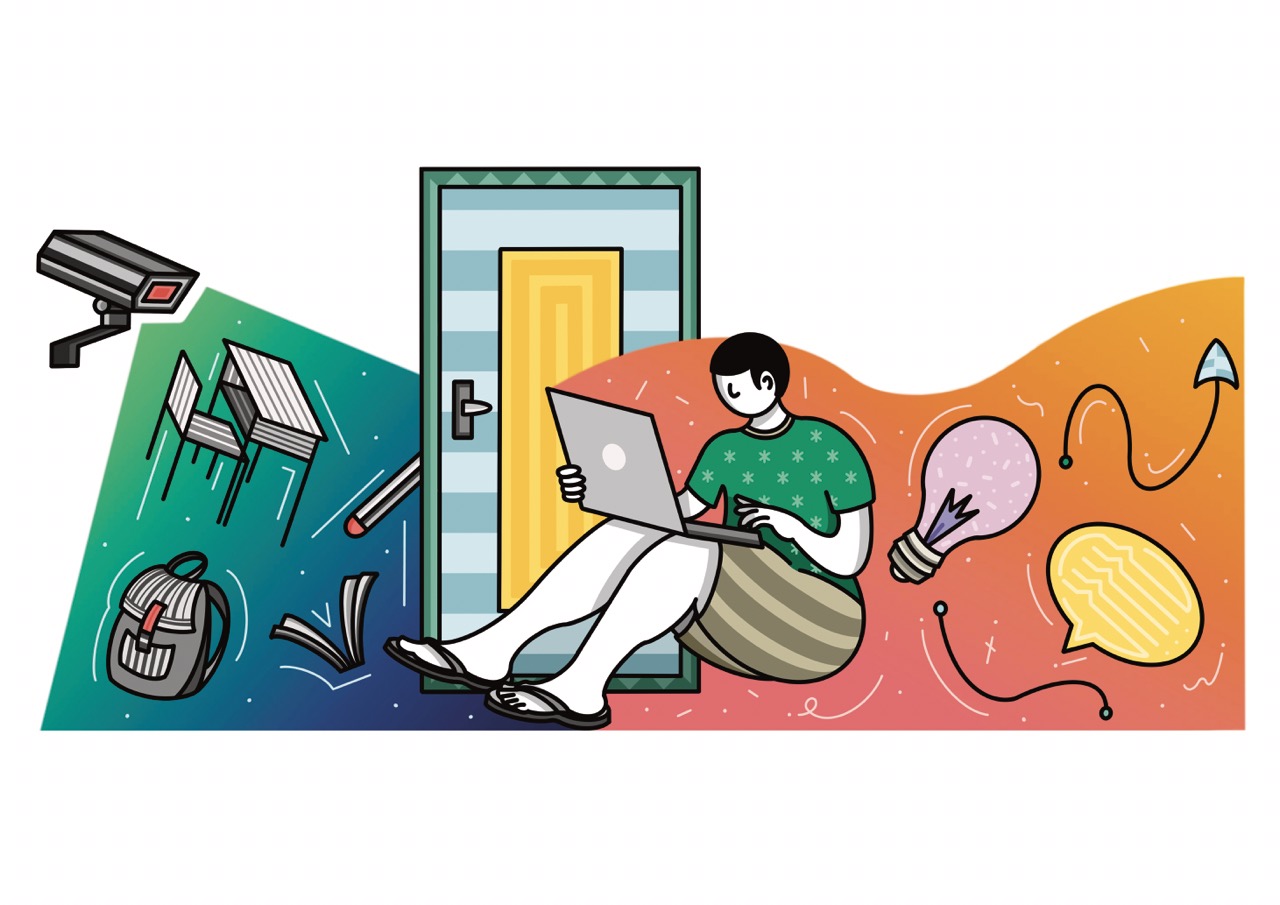The Point: Crisis and Opportunity: Hong Kong Art Education in Recent Years
By kurt chan
Full text also available in Chinese.

Illustration by KITSON WONG for ArtAsiaPacific.
In the years since 2019, Hong Kong has found itself in the depths of a pandemic and in the wake of a major social movement. Besides the economy, these events have most heavily impacted education. Students have had to adapt to new societal norms and ways of learning, while dealing with the emotions stirred up by society’s dramatic changes and the new forms of official control exerted over the public sphere.
During this time, classes for high-school and university students have been almost paralyzed, with no regular face-to-face meetings for nearly three years. This has meant that students have mainly been learning through self-study and online tutorials. They have to take the initiative to study, while teachers have to significantly adjust their teaching materials, methods, and assignments. These changes have had a huge effect on theory- and-practice-based art education.
Amid the challenges of the current moment, I have been surprised by the graduation exhibitions of art students at secondary schools and universities. The forms of expression in the works have not been compromised, while the students’ understanding of themes, the layers and depth to their thinking, as well as their desires to express themselves are all stronger than what I recall from previous years. One wonders whether school is necessary and whether the internet is enough to replace traditional learning methods.
These unexpected results at graduation exhibitions have led me to the following conjectures about the current state of education. Firstly, the lack of face-to-face classes has unraveled established educational processes, as both teachers and students have needed to find alternative ways to accomplish their tasks. New approaches include the abundant use of online materials, which previously had not been effectively utilized; the flexible adoption of video and multimedia as communication tools; and the rearrangement of curricula.
Additionally, the internet provides a plethora of materials that can be readily used for more independent ways of learning. Over the past decade or so, internet-based education has grown into a huge industry. Whether in terms of information volume or accuracy, these user-friendly platforms surpass individually designed curricula.
Lastly, political conflicts and new societal norms have necessitated that every member of society establish a set of values, including young people, who have thus been pushed to develop more nuanced perspectives on the world. In the past, art students in Hong Kong were overly sentimental and focused on form rather than building a meaningful connection with the world. Prizing a materialistic lifestyle by default, they seemed indifferent to social affairs or the pursuit of higher ideals. After experiencing social upheavals, young people have matured, which in turn enriches their creative work beyond form and technique. They now seek a deeper understanding of contemporary conditions, otherwise they would be lost in a haze of vastly different opinions. The world is no longer as black-and-white as it is described in textbooks. The study of art also appears to have a purpose. And, driven by this purpose instead of adherence to rigid procedures and linear progressions, students’ learning processes are more spontaneous.
To be frank, Hong Kong’s archaic educational system hasn’t been able to keep pace with the rapid development of the city’s arts infrastructure and information access. Many experienced teachers are overburdened by coursework and do not have the appropriate support to keep up with changes in the creative industry. The contents and methods of art lessons at most schools, save for those that value the arts, remain rather primitive. Does the conventional school model exist to inspire a new generation or simply preserve the education industry?
Growing governmental control over Hong Kong’s public spaces in recent years has forced people to retreat into their private domains, which are merging with virtual realms. This tightening grip, then, has ironically spurred further knowledge exchange and interactions between people. At the same time, the complexity of public issues has prompted deeper thinking. By chance, Hong Kong has become a classroom in itself, and, in this context, art has its subtle advantages as a tool for reflecting on and responding to the outside world.
Hong Kong’s utilitarian education policy and rigid procedures have long been challenged by objective circumstance, falling behind the development of common knowledge. This pause provided by the pandemic and social upheaval is, in my view, an opportunity for renewal.








